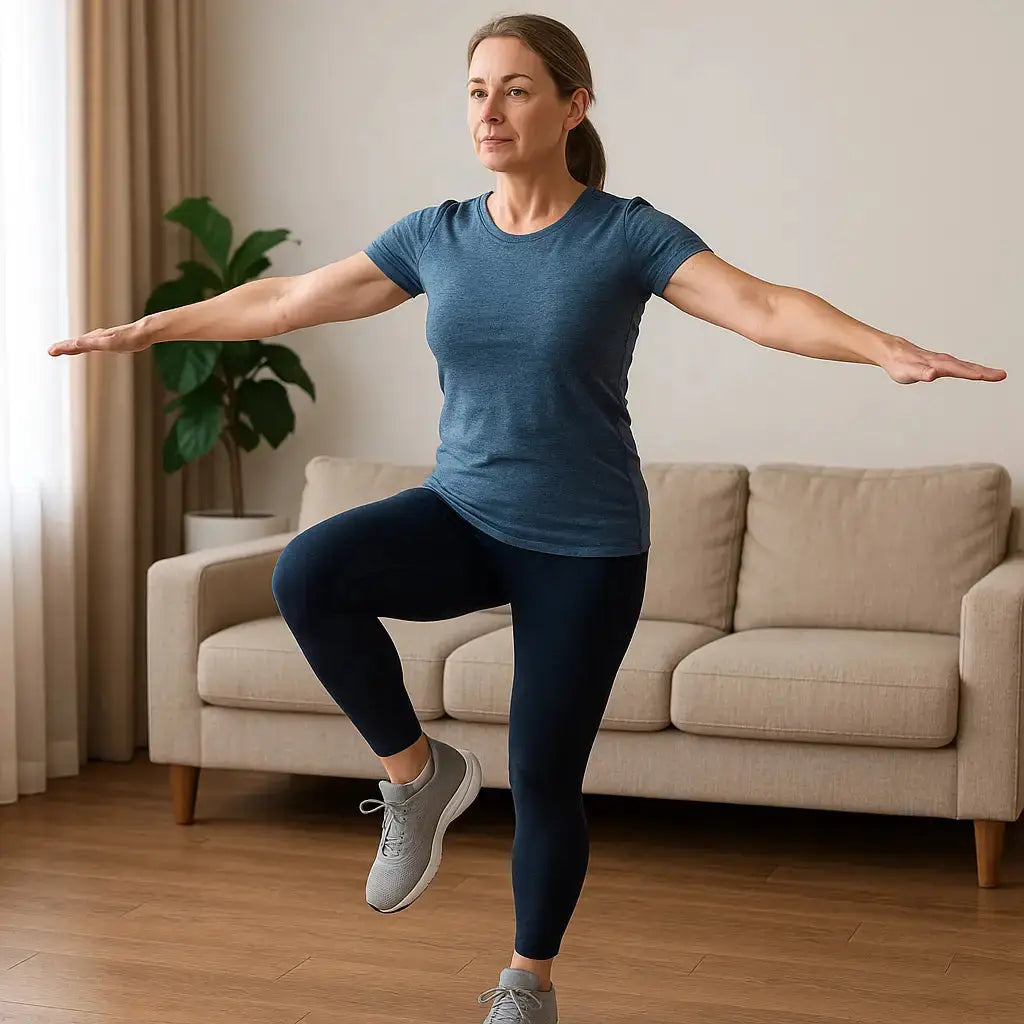
The Ultimate Guide to Balance: How to Improve Stability, Coordination, and Confidence at Any Age
Share
Balance isn’t just about standing still — it’s the foundation of every movement you make. From walking and climbing stairs to exercising or even reaching for something on a shelf, balance determines how confidently and safely you move. As we age, our stability can naturally decline, leading to wobbles, stumbles, or even falls. But here’s the empowering truth: balance can be rebuilt at any age through targeted training and consistent movement.
In this ultimate guide, you’ll discover what causes balance issues, how to strengthen your body’s stability system, and the best exercises and tools to help you regain control — including modern training aids like the Vibration Plate | Multiuse Exercise Machine for Full-Body Workouts – Fortira Fitness from Fortira Fit.
By the end of this article, you’ll have a complete roadmap to move stronger, steadier, and more confidently — no matter your age or fitness level.
Why Balance Matters More Than You Think
Good balance impacts nearly every aspect of your daily life. It allows you to walk confidently, prevent falls, maintain posture, and perform both simple and advanced movements with control. It’s also key to building strength and independence as you get older.
Poor balance isn’t just inconvenient — it can lead to injuries and loss of confidence. Studies show that falls are a leading cause of injury among adults over 65, often resulting in hospitalizations and reduced mobility. But when you make balance training a regular part of your fitness routine, you can dramatically lower your fall risk and improve your overall quality of life.
Balance training also strengthens the core, legs, hips, and stabilizer muscles — all crucial for posture, joint protection, and daily energy.
What Causes Poor Balance?
Before you can fix poor balance, it helps to understand what’s behind it. Several factors can contribute, including:
-
Muscle Weakness: Especially in the legs, hips, and core.
-
Reduced Flexibility: Tight muscles limit your range of motion and reaction time.
-
Proprioception Decline: The body’s awareness of where it is in space weakens with age or inactivity.
-
Inner Ear Changes: Affect equilibrium and reaction to motion.
-
Sedentary Lifestyle: Less movement = less stimulation for balance-related systems.
-
Vision Problems: Vision helps guide movement; when it’s reduced, so is spatial confidence.
The good news? Each of these can be improved with targeted exercises and mindful movement habits.
The 3 Pillars of Better Balance
Balance isn’t just one skill — it’s built on three interconnected foundations: strength, coordination, and confidence.
1. Strength & Stability
Muscle strength, especially in your core, glutes, and lower body, is essential for stability. Weak muscles make it harder to stay upright when walking or changing direction. Strength exercises like squats, calf raises, and hip abductions help anchor your balance system.
2. Coordination & Body Awareness
Your brain and muscles must communicate seamlessly to maintain control. This coordination can fade over time, but it’s trainable. Movements that challenge both sides of your body or change direction — like heel-to-toe walks or leg swings — help retrain your nervous system.
3. Focus & Confidence
Balance isn’t purely physical — it’s mental. Fear of falling causes stiffness and hesitation, which ironically make falls more likely. Training with intention and mindfulness helps rebuild confidence and fluidity of movement.
Top Exercises to Improve Balance at Any Age
Balance training doesn’t require fancy equipment or long workouts — just consistency. Start slow, use a wall or sturdy chair for support, and focus on controlled movements.
1. Single-Leg Stand
-
Stand near a counter or wall.
-
Lift one foot and hold for 10–15 seconds.
-
Switch sides and repeat 2–3 sets.
Focus: Strengthens ankles, hips, and core stabilizers.
2. Heel-to-Toe Walk
-
Walk in a straight line, placing the heel of one foot directly in front of the toes of the other.
-
Take 10–15 steps, keeping your eyes forward and movement slow.
Focus: Improves coordination, gait, and posture.
3. Leg Swings (Front to Side)
-
Hold onto a chair or wall.
-
Swing one leg forward and backward, then side to side in a smooth motion.
-
Perform 10–15 repetitions per leg.
Focus: Enhances hip mobility and balance recovery.
4. Standing Hip Abduction
-
Stand tall, holding a stable surface.
-
Lift one leg out to the side, pause, then lower with control.
-
Repeat 10–15 times per side.
Focus: Strengthens hip abductors — key for side stability.
5. Calf Raises
-
Stand with feet shoulder-width apart.
-
Slowly lift onto the balls of your feet, then lower.
-
Perform 15–20 repetitions.
Focus: Strengthens calves and ankles for stability on uneven surfaces.
6. Side-Stepping with Resistance Band
-
Place a light resistance band around your knees or ankles.
-
Step sideways with small, controlled steps.
-
Move 10–12 steps one way, then reverse.
Focus: Builds hip, glute, and thigh strength for lateral control.
7. Yoga Tree Pose
-
Stand tall and shift your weight onto one foot.
-
Place the sole of your opposite foot against your inner calf or thigh (avoid the knee).
-
Hold for 20–30 seconds, breathing deeply.
Focus: Develops stability, posture, and body awareness.

How the Fortira Fit Vibration Plate Enhances Balance
For those seeking faster results or a safe, at-home training aid, vibration plates are one of the most effective balance-boosting tools available.
The Vibration Plate | Multiuse Exercise Machine for Full-Body Workouts – Fortira Fitness uses micro-vibrations to activate deep stabilizing muscles in your legs, hips, and core — muscles that traditional exercises often miss.
Key Benefits:
-
Improves reflexes and reaction time
-
Increases circulation and joint flexibility
-
Activates stabilizer muscles for better balance control
-
Safe for seniors and beginners — you can hold onto a chair or wall for extra support
Even just 10 minutes a day on the vibration plate can strengthen your balance foundation while improving coordination and posture.
Discover how the Vibration Plate | Multiuse Exercise Machine for Full-Body Workouts – Fortira Fitness can transform your stability training and help you move with confidence every day.
Lifestyle Habits That Support Better Balance
Balance isn’t built only during workouts — your daily habits play an equal role.
1. Improve Posture Awareness
Maintain an upright posture throughout your day. Keep your shoulders back, engage your core, and avoid slouching to improve alignment and stability.
2. Wear Proper Footwear
Choose shoes with firm soles, good grip, and ankle support. Avoid overly soft or high-heeled shoes that can destabilize your stance.
3. Stay Active Throughout the Day
Walk, stretch, and move often. Even household chores or gardening help stimulate your balance reflexes.
4. Nutrition & Hydration
Proper hydration, along with calcium, vitamin D, and magnesium, supports muscle and nerve function — all essential for balance.
5. Sleep & Recovery
Rest allows your nervous system and muscles to reset and strengthen, reducing fatigue-related instability.
Common Balance Mistakes to Avoid
Avoiding these pitfalls will help you make steady, safe progress:
-
Holding your breath: Always breathe steadily — oxygen aids coordination.
-
Going too fast: Rushing movements defeats control and increases risk.
-
Ignoring pain: Discomfort signals overexertion or poor form.
-
Skipping consistency: Balance improvements require daily or near-daily practice.
Remember: Balance isn’t about perfection — it’s about progress.
How Long Does It Take to See Results?
With regular practice, most people notice improvements in stability and coordination within 3–4 weeks. Core strength and posture continue to improve after about two months of steady effort.
To speed results:
-
Train balance 4–5 days per week for 10–15 minutes.
-
Incorporate the vibration plate 2–3 times weekly for full-body engagement.
-
Celebrate small wins — even standing steadier on one leg is progress!
Build Your Confidence — Start Small, Stay Consistent
Improving balance isn’t just about preventing falls — it’s about reclaiming confidence in your movement and independence. Whether you’re returning to fitness or simply want to move through life with more strength and ease, balance training gives you the control and poise to do it.
Start today with just a few simple exercises, commit to consistent practice, and use tools like the Vibration Plate | Multiuse Exercise Machine for Full-Body Workouts – Fortira Fitness to accelerate your progress safely from home.
Your balance journey starts now — stand taller, move stronger, and live steadier with Fortira Fit.
FAQ Section
Q: How often should I practice balance exercises?
A: Aim for 10–15 minutes a day, 4–6 times per week. Consistency matters more than intensity.
Q: Can vibration plates really help improve balance?
A: Yes — they stimulate stabilizer muscles through micro-movements, enhancing coordination, muscle tone, and proprioception.
Q: Are balance exercises safe for seniors?
A: Absolutely. Start slowly, use a stable surface for support, and increase difficulty as you gain confidence.
